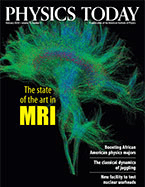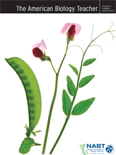
Resonance-Journal of Science Education
metrics 2024
Empowering Educators with Cutting-Edge Insights
Introduction
Resonance-Journal of Science Education, published by SPRINGER INDIA, is an esteemed academic journal focused on the field of science education. With a commitment to enhancing the understanding and teaching of science through innovative research and pedagogy, the journal serves as a vital platform for educators, researchers, and students alike. Despite its recent recognition as Q4 in Education and Q3 in Multidisciplinary categories, Resonance continues to strive for excellence in disseminating knowledge from 1996 through to 2024. The journal is indexed under Scopus, ranking #1159 out of 1543 in the Educational Sciences, reflecting its growing influence in the discipline. With immense potential for scholarly contribution and a broad readership, Resonance remains dedicated to advancing the field of science education, fostering intellectual growth, and encouraging collaborative learning among its audience.
Metrics 2024
 0.17
0.17 0.40
0.40 0.40
0.40 23
23Metrics History
Rank 2024
Scopus
IF (Web Of Science)
JCI (Web Of Science)
Quartile History
Similar Journals

PHYSICS TODAY
Advancing Knowledge in the Realm of PhysicsPHYSICS TODAY is a prestigious journal published by the American Institute of Physics, serving as a pivotal platform for the dissemination of innovative research and developments in the field of physics and astronomy. With an ISSN of 0031-9228 and an E-ISSN of 1945-0699, this journal has been in circulation since 1948 and is set to continue until 2024. Recognized for its substantial contributions to the scientific community, PHYSICS TODAY holds a significant position within the Q2 quartile of the Physics and Astronomy category as of 2023. Although it does not offer open access, its articles remain crucial resources for researchers, professionals, and students seeking to stay abreast of the latest advancements across a broad range of topics in general physics and astronomy. With a current Scopus ranking of #150 out of 243 and a percentile standing at 38, the journal bolsters its reputation as a reliable source for high-quality scientific discourse. In an era of rapid scientific advancement, PHYSICS TODAY remains dedicated to fostering a deeper understanding of the physical universe, making it an essential read for those invested in the future of physics.

Medical Science Educator
Bridging gaps in medical science and educational excellence.Medical Science Educator, published by SpringerNature, is an esteemed journal committed to advancing the intersection of educational methodologies and medical science. With a significant impact in its field, this journal holds a Q2 ranking in both Education and Medicine (miscellaneous) categories as of 2023, reflecting its dedication to high-quality research and scholarly dialogue. Operating in a digital format, the journal uniquely facilitates access to pivotal studies from its inception in 2011 until 2024, fostering innovation in medical education. The latest rankings highlight its credibility, placing it at the 63rd percentile in Social Sciences - Education and the 56th percentile in Medicine - Medicine (miscellaneous) within Scopus. This platform serves as an invaluable resource for educators, researchers, and practitioners aiming to enhance teaching practices and shape the future of medical education.

International Electronic Journal of Mathematics Education
Transforming Educational Practices with Rigorous ResearchInternational Electronic Journal of Mathematics Education (IEJME) is a premier platform dedicated to advancing the field of mathematics education through rigorous research and innovation. Published by MODESTUM LTD, this interdisciplinary journal focuses on the pedagogical, theoretical, and empirical aspects of mathematics education, facilitating a deep understanding of teaching practices, learning methods, and curriculum development. With its commitment to open access, IEJME ensures that research findings are accessible to a global audience, fostering collaborative efforts among educators, researchers, and practitioners. The journal has maintained a commendable position in academic rankings, holding a Rank of #114/399 in General Mathematics and #782/1543 in Education within Scopus, highlighting its significant contribution to the scholarly community. By publishing high-quality research from 2009 to 2016 and 2021 to 2024, IEJME continues to serve as an essential resource for those invested in enhancing mathematical understanding in educational contexts, inspiring future generations of mathematicians and educators.

International Journal for Technology in Mathematics Education
Advancing interdisciplinary approaches in mathematics education.International Journal for Technology in Mathematics Education (ISSN: 1744-2710, E-ISSN: 2045-2519) is a pioneering platform published by Research Information Ltd that focuses on the interplay between technology and mathematics education. Established to bridge the gap between pedagogical practices and technological advancements, this journal connects researchers, educators, and practitioners in a bid to enhance teaching methodologies and optimize learning outcomes in mathematics. Although its coverage in Scopus was discontinued after 2020, it continues to be a vital resource for those interested in the integration of technology into educational settings. With its significant emphasis on interdisciplinary approaches, the journal has garnered attention in the realms of social sciences and computer science, with Scopus rankings reflecting its niche contributions. This journal is crucial for professionals aiming to explore innovative techniques in mathematics education, making it an invaluable addition to any academic library.

AMERICAN BIOLOGY TEACHER
Nurturing Passion for Biology in Classrooms Across AmericaAMERICAN BIOLOGY TEACHER, published by the NATIONAL ASSOCIATION OF BIOLOGY TEACHERS INC, is a vital resource for educators and researchers in the interconnected fields of biology education and agricultural sciences. With an ISSN of 0002-7685 and an E-ISSN of 1938-4211, the journal has been dedicated to promoting innovative teaching practices and enhancing the quality of biology education since its inception in 1970. Currently positioned in the Q3 quartile for both Agricultural and Biological Sciences (miscellaneous) and Education categories, it offers valuable insights and findings that address the pedagogical challenges faced by biology teachers today. Despite its non-open access model, the journal remains a critical platform for disseminating research that contributes to the professional development of biology educators in the United States and beyond. With a focus on practical applications and educational methodologies, AMERICAN BIOLOGY TEACHER aims to foster a deeper understanding of biological concepts among students, thereby shaping the next generation of scientists and informed citizens. Access to this journal continues to be an essential resource for those seeking to enhance teaching effectiveness and student engagement in the sciences.

International Journal of Education and Information Technologies
Exploring New Horizons in Educational TechnologyWelcome to the International Journal of Education and Information Technologies, a leading academic platform published by NORTH ATLANTIC UNIV UNION-NAUN. With an emphasis on the integration of education and information technology, this journal aims to foster innovative research and discussions that enhance pedagogical practices and technological advancements in educational contexts. Although currently an open access journal, it provides unrestricted access to emerging studies that are crucial for educators, researchers, and professionals aiming to stay at the forefront of education technology. While specific metrics such as H-index and Scopus ranks are yet to be defined, its ISSN 2074-1316 signifies its credibility and commitment to quality scholarship. This journal serves as a vital resource for those passionate about bridging the gap between technology and education, encouraging impactful research that shapes the future of learning environments.

Journal of Astronomy and Earth Sciences Education
Empowering Educators in Astronomy and Earth SciencesThe Journal of Astronomy and Earth Sciences Education is a premier scholarly publication dedicated to advancing the study and teaching of astronomy and earth sciences. Published by CLUTE INT, this journal serves as an essential resource for educators, researchers, and practitioners in the fields of astronomy, geology, and environmental sciences. With a commitment to disseminating innovative research and pedagogical practices, it embraces a wide range of topics from classroom strategies to the integration of technology in earth science learning. Although the journal operates on a subscription basis, it is recognized for its rigorous peer-review process and its aim to foster interdisciplinary collaboration and educational advancements. With an ISSN of 2374-6246 and an E-ISSN of 2374-6254, it encourages submissions that not only further academic inquiry but also enhance community engagement in these vital scientific domains, making it an invaluable asset for anyone involved in earth sciences and astronomy education.

Teaching of Mathematics
Connecting Researchers and Educators in Mathematics TeachingTeaching of Mathematics is an esteemed open-access journal devoted to the field of mathematics education, published by DRUSTVO MATEMATICARA SRBIJE in Serbia. Since its inception in 1998, the journal aims to foster scholarly dialogue and disseminate research findings that contribute to the effective teaching and learning of mathematics. Although it currently holds a Q4 ranking in both Education and Miscellaneous Mathematics categories, the journal is dedicated to providing a platform for innovative pedagogical strategies, theoretical discussions, and empirical studies. With an ISSN of 1451-4966 and an E-ISSN of 2406-1077, Teaching of Mathematics offers open access to its content, ensuring that researchers, educators, and students can freely benefit from its contributions. As it converges towards 2024, the journal aspires to enhance its impact and influence within the mathematical education community, encouraging all stakeholders to share their insights and advancements in this critical area of study.

Notes and Records-The Royal Society Journal of the History of Science
Exploring the Roots of Scientific InnovationNotes and Records - The Royal Society Journal of the History of Science is an esteemed scholarly journal published by the Royal Society in the United Kingdom, focusing on the historical aspects of science and its impact on modern scientific practices. With an ISSN of 0035-9149 and E-ISSN 1743-0178, this journal serves as a vital platform for researchers, professionals, and students who seek to explore the intricate connections between historical developments and contemporary scientific discourse. Recognized for its academic rigor, it holds a commendable position in the Q3 category of the History and Philosophy of Science field, ranking #56 out of 223 according to Scopus, and showcasing a 75th percentile ranking. Covering converged years from 1970 to 1973 and from 1975 to 2024, the journal publishes articles that contribute significantly to the understanding of the evolution of scientific thought. While it currently does not operate under an open access model, its esteemed content continues to engage a broad readership, fostering a deeper appreciation for the history behind scientific innovation and inquiry.

Research and Practice in Technology Enhanced Learning
Fostering collaboration for a tech-enhanced educational future.Research and Practice in Technology Enhanced Learning is a leading international journal dedicated to advancing the field of educational technology and its applications in various learning environments. Published in Taiwan, this journal has firmly established itself as an open-access platform for sharing innovative research, practical insights, and emerging trends since its inception in 2015. With an impressive Q1 ranking in Education and Media Technology for 2023, coupled with notable placements in the fields of Social Psychology and Management of Technology and Innovation, the journal underscores its significance in fostering interdisciplinary collaboration among scholars and practitioners. Its rigorous peer-review process ensures the publication of high-quality articles that contribute substantively to both theoretical and practical knowledge. The journal's commitment to open access enhances its visibility and accessibility, making it an invaluable resource for researchers, educators, and students seeking to explore the intersection of technology and learning.